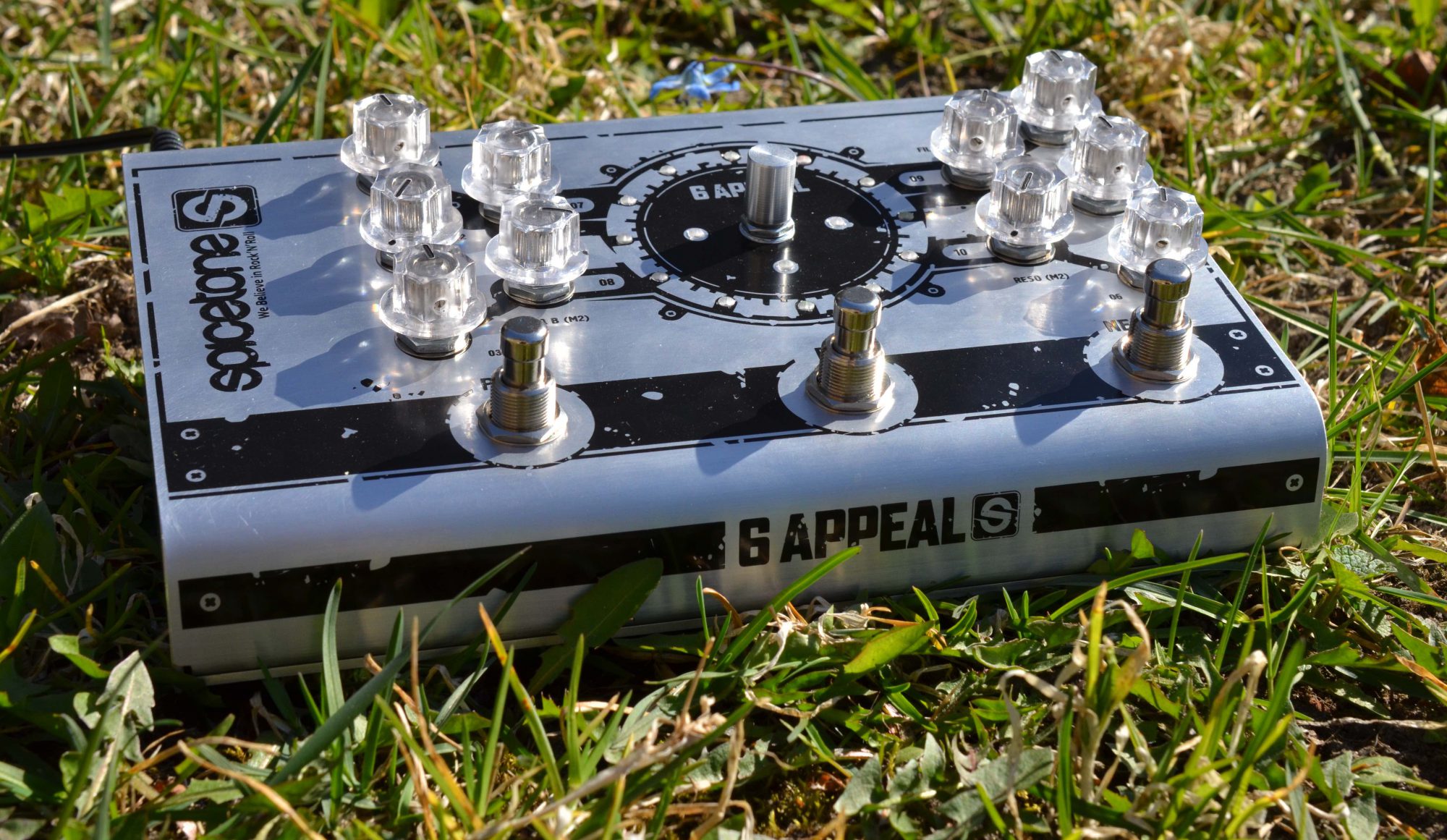There’s an excellent overview in VGuitar Forums. Many thanks Shawn!
I couldn’t resist copying it to our blog, though of course it’s better to read it in the original source here.
I’ve been able to spend a few hours with this now, & figured I’d share my initial thoughts.
6Appeal First Impressions
Learning the Unit & my First Preset:
I read the manual about 10 times before I “got” it. No exaggeration – I have a highly annotated and dog-eared copy of the manual. The way all the features work together is beautifully engineered, logical and highly intuitive. The UI is unique, however, and has a learning curve. Over time, you get to appreciate reading a lot of info at a glance, but this will take time and a healthy set of grey matter/memory. (Having grown up in San Francisco in the ’60s and ’70s, I’m not sure I have the latter…)
I spent most of my time thus far in “Menu 1”, the basic sound sculpting menu, learning the features & making a preset for jamming with my buddies. The unit allows you to defeat the tone knob (Menu 1.10), and doing so creates a fuller sound that was more appealing to me. I used a Peavey Wolfgang with nice hot pups and a set of 9s. I suspect that lighter gauge strings like 9s may warrant defeating the tone stack.
As much as I love hex distortion, you don’t want to overuse it. Fortunately you can turn on processing of your mag pup signal (Menu 1.10). Then you can mix a bit of your processed mag pups in via the Mono pot.
THAT was an exciting discovery – the mix of hex distortion + some mag pup distortion to fill it out sounds fantastic.
Since I was driving it from a GK3 mounted close to the bridge of my guitar, I used BOTH Root Boost circuits (Menu 1.7 & 1.8 ). At the time, I was at home doing this at low volume…
A note on the manual – it uses a notation of “0On_16Off” when describing Root Boost and Output Boost settings. the “0” refers to the mono channel and the “16” refers to hex channels 1-6. Thus, to affect your mono/mag pups and your hex processing, you would use the setting 0On_16On (red).
First Jam:
I’ve been playing with my friends for years, using various gear & software, including a GR-55, a VG-99, tube amps, Amplitube, etc… This was the first time my drummer said, “THAT thing is BADASS!”
You can’t really get a feel for this unit until you *feel* it live, at playing volume.
I had no other processing – just my guitar via 13-pin to the 6Appeal to my PA. Playing over a PA, the first thing I realized was that one Root Boot circuit was plenty. I immediately disabled one of them.
The 2nd order low-pass filter is fun and dangerous. I was feeling my oats & started experimenting with the 2 frequencies & resonance at playing volume – which the manual tells you NOT to do. After calling all dogs in a 20-mile radius, my amp reset itself. I will not do that again.
Pros:
- Hex distortion – if you love hex distortion you’ll love this unit; it’s what it does…
- ANALOG distortion circults, full ANALOG path through the device – a very cool rich sound
- Mono mix – your mag pups add some ooomph to the Hex distortion
- Two pole (2nd order) low-pass filter – lots of variability in how you roll off your highs
- Sequencer – a highly configurable slicer effect, up to 24 steps of filter, panning and/or drive settings
- Spread knobs & “smile” vs “tilt” – a unique idea that allows you to differentiate how the above effects are applied across the 6 strings
- Envelope – there are 3 ways to define envelopes; hex envelope processing requires external note on/note off generation, e.g., via using an FTP or a GR-55’s MIDI OUT.
- Small company of dedicated folks – you send in a question and get a rapid response – maybe even from the primary engineer
Cons:
- Learning curve & UI
- Cost
Bottom Line:
NONE OF THE DEMOS DO THE SOUND JUSTICE. This is fully analog hex distortion. Does anybody else even try to do this? I dunno… It’s pretty freaking glorious when dialed in.
The features are pretty deep. This mix of deep features & a radically unique approach to a UI means there is a steep learning curve.
Those who love exploring new gear & new sounds (like myself) will have a great time with this. I could easily see pros/techs having fun with this. Folks who want to zip thru presets will be frustrated – you must adjust settings for your gear.
I’m still getting familiar with the basic settings & the filter. As I learn the Sequencer & Envelope better, I’ll share my learnings & some sound samples.
Open disclosure: Spicetone gave me a promotional discount, in the hopes that I’d get jazzed & start writing about this. Well, I got jazzed…

